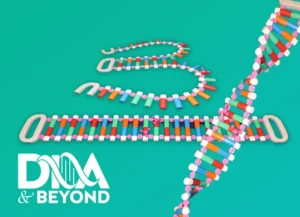We’ve previously examined how the central dogma of molecular biology hinges on the precise translation of genetic information into proteins, utilizing a specific set of 20 proteinogenic amino acids.
The term “proteinogenic amino acids” refers to the specific amino acids that are directly used by living organisms to build proteins. These amino acids are the “building blocks” of proteins and are incorporated into polypeptide chains (which fold into proteins) during the process of translation, a key part of protein synthesis. Proteinogenic literally means “protein-building”.
These are the primary structural units of cellular machinery. However, the biochemical landscape extends beyond this core group. A diverse combination of other amino acids, termed non-proteinogenic amino acids, exists and participates in a wide spectrum of biological and chemical processes, both within living systems and in the broader environment.
Let’s delve into the structural distinctions and functional diversities of these fascinating molecules.
Shared Features of Amino Acids
All amino acids, whether proteinogenic or non-proteinogenic, share a conserved molecular architecture centered around an alpha-carbon atom. This central carbon is covalently bonded to four distinct functional groups:
- An amino group (-NH₂): Exhibiting basic chemical properties.
- A carboxyl group (-COOH): Characterized by acidic properties.
- A hydrogen atom (-H).
- A variable side chain (R group): This substituent dictates the unique chemical characteristics and functional roles of each specific amino acid.
For instance, glycine, the simplest amino acid, possesses a hydrogen atom as its side chain. Conversely, tryptophan features a complex indole ring system as its side chain, highlighting the structural diversity conferred by these variable moieties.
The Proteinogenic Set: Amino Acids Engaged in Translation
The proteinogenic amino acids comprise the 20 amino acids directly incorporated into polypeptide chains during ribosomal translation. Their side chains exhibit physicochemical properties compatible with the ribosomal active site and the intricate interactions with transfer RNA (tRNA) molecules. The sequence of codons within messenger RNA (mRNA) dictates the linear order of these amino acids, ultimately determining the primary structure and subsequent folding of the functional protein.
Key Attributes of Proteinogenic Amino Acids:
- Direct substrates for ribosomal polypeptide synthesis.
- Unique side chains conferring specific chemical properties (e.g., hydrophobicity, charge, hydrogen bonding potential).
- Encoded within the genome and accessed via the mRNA codon table.
- Their side chain properties govern protein folding, stability, and interactions with ligands and other biomolecules.
The Functional Roles of Non-Proteinogenic Amino Acids
Non-proteinogenic amino acids encompass a structurally diverse group of amino acids that are not directly incorporated into proteins via the standard translational machinery. Despite this, they fulfill critical roles in various biological pathways and chemical contexts.
Key Attributes of Non-Proteinogenic Amino Acids:
- Not direct substrates for ribosomal protein synthesis.
- Can serve as biosynthetic intermediates, participating in metabolic pathways leading to the synthesis of other essential molecules (e.g., citrulline in arginine biosynthesis).
- May be generated through post-translational modifications of proteinogenic amino acid residues within existing polypeptides, thereby modulating protein function (e.g., hydroxylation of proline in collagen).
- Can function as signaling molecules (e.g., neurotransmitters like gamma-aminobutyric acid – GABA), components of specialized biomolecules (e.g., bacterial cell wall peptidoglycans), or even possess toxicological properties.
- Have been identified in abiotic environments, including meteorites and prebiotic simulation experiments.
Structural and Functional Divergences: The Role of the Side Chain
The principal distinctions between proteinogenic and non-proteinogenic amino acids often lie in the structure and reactivity of their side chains, and consequently, their interactions within biological systems.
- Side Chain Compatibility with the Ribosome: Proteinogenic amino acid side chains possess structural features that facilitate their binding to specific tRNA molecules and their accommodation within the ribosomal peptidyl transferase center.
- Enhanced Chemical Reactivity and Modification: Non-proteinogenic amino acid side chains may exhibit unique reactive groups or serve as preferred substrates for enzymatic modifications, enabling their diverse functional roles. For example, the phosphorylation of serine residues (generating phosphoserine, a non-proteinogenic amino acid within a protein) introduces a charged moiety that can alter protein-protein interactions.
- Participation in Specialized Metabolic Pathways: The side chains of certain non-proteinogenic amino acids are specifically tailored for enzymatic transformations within dedicated metabolic routes, such as the urea cycle involving ornithine and citrulline.
- Post-Translational Diversification: The enzymatic modification of proteinogenic amino acid side chains after translation generates a vast repertoire of non-proteinogenic residues within mature proteins, significantly expanding their functional capacity (e.g., the hydroxylation of proline and lysine in collagen).
The difference between a tree and a tiger is not what parts they have, but how amino acids tell those parts to behave. This difference is driven by the instructions encoded in DNA—a molecule that doesn’t just store life’s ingredients, but directs when, where, and how amino acids are assembled into proteins with distinct functions. To visualize this profound concept, the DNA model from DNA and Beyond offer an invaluable learning tool, helping students and enthusiasts alike see how genetic information translates into the breathtaking diversity of life.
The Expansive World of Amino Acid Function
While the 20 proteinogenic amino acids form the foundational building blocks of proteins and are central to the flow of genetic information, the broader family of non-proteinogenic amino acids underscores the remarkable chemical versatility of biological systems. These molecules, with their diverse structures and functional roles, participate in critical metabolic pathways, act as signaling molecules, and contribute to the post-translational diversification of the proteome. Recognizing the distinctions and interconnectedness of both proteinogenic and non-proteinogenic amino acids provides a deeper understanding of the sophisticated molecular mechanisms underpinning life.


